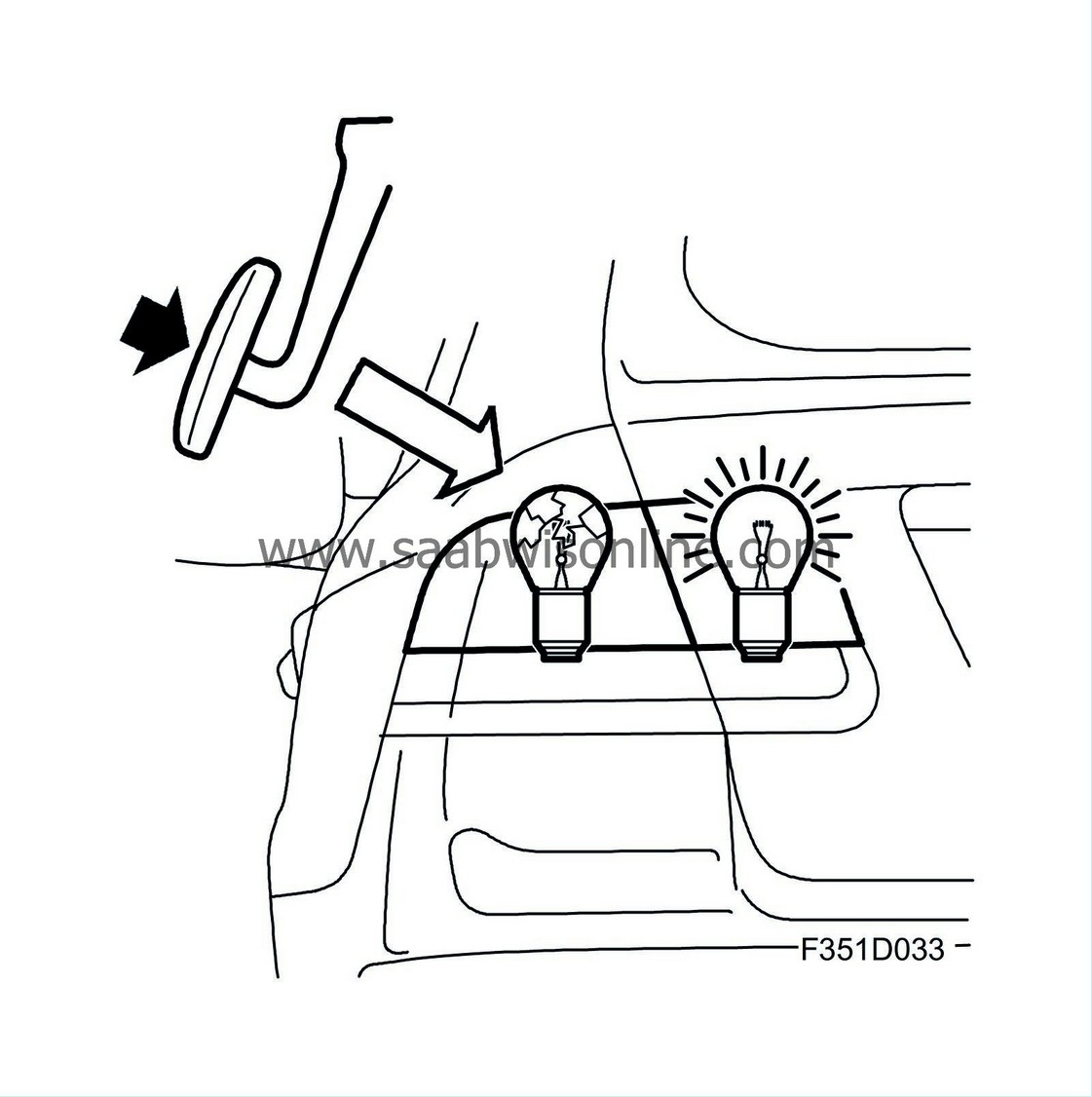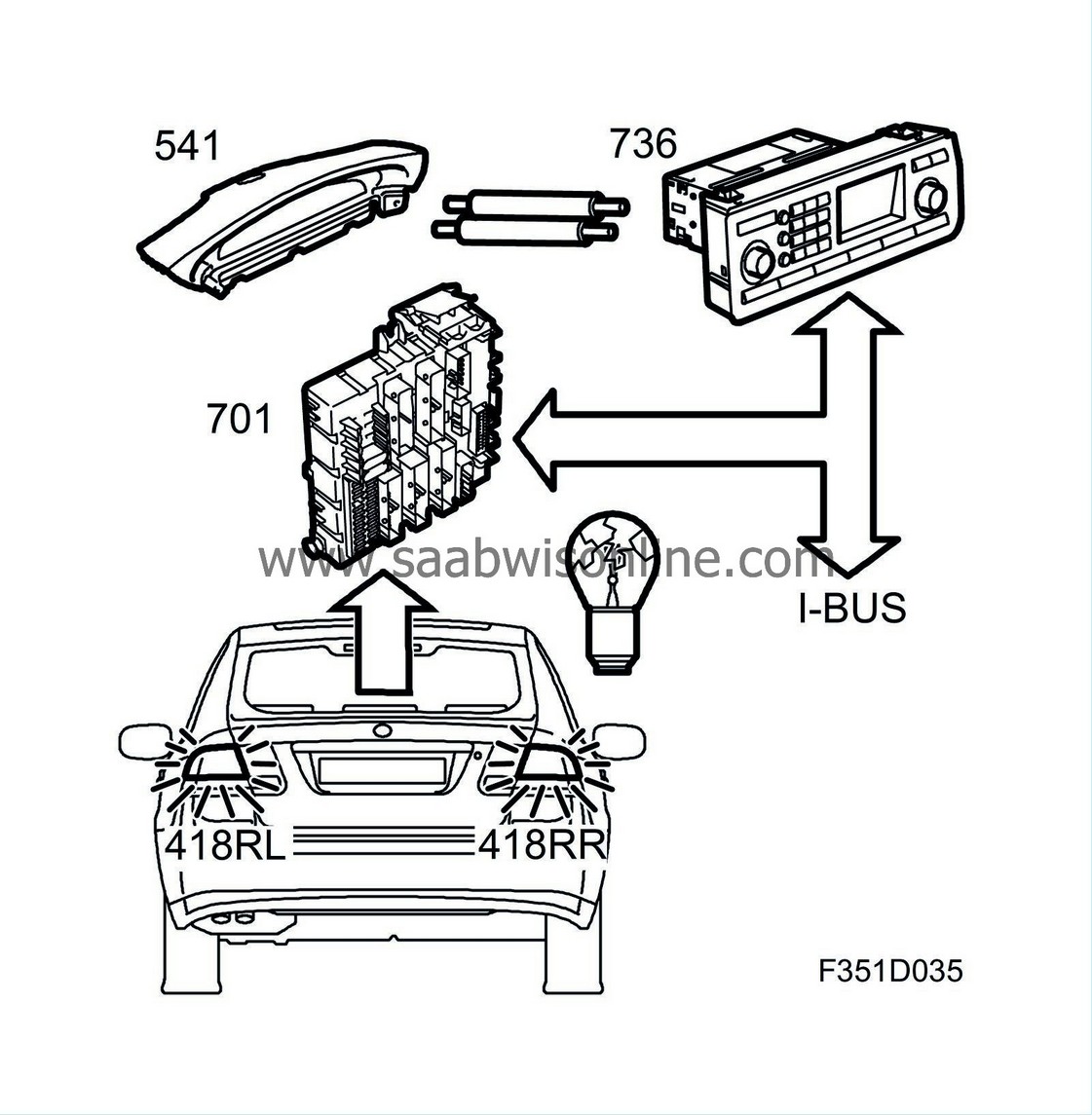Brake lights, detailed description
| Brake lights, detailed description |
The brake lights come on when the brake pedal is depressed. The Rear Electrical Centre (REC) monitors the brake light circuits and sends error messages on the bus. The car has brake lights situated in the right and left-hand light clusters as well as a high-level brake light at the top of the rear window. The high-level brake light consists of LEDs.


Brake lights via lead (normal function)
When the brake pedal is depressed, the brake light switch (29) is actuated. The brake light switch (29) is supplied +30 on pin 1. When the switch closes, B+ is supplied further out to pin 2. From brake light switch pin 2, voltage is supplied to the engine control module and REC (701) pin 5 (B2-D). Regardless of the position of the ignition switch, REC supplies B+ (PWM 100%) from pin 2 (R-D) to light cluster (30/418RL) pin 2 for the left-hand brake light, from pin 4 (R-D) to light cluster (30/418RR) pin 2 for the right-hand brake light and from pin 15 (H-2) to high-level brake light (30RC) pin 2. Pin 3 of the light clusters (418RL/RR) is grounded in grounding point G3 (left) and G29 (right). High-level brake light (30RC) pin 3 is grounded in grounding point G3.
Brake lights via bus message (substitute function)
This function replaces the lead between the brake light switch (29) and REC (701) in the event of a break along the lead. The function is only active when the ignition switch is in the ON or START position.
The brake pedal switch (134) is also connected to the ECM. The engine management system uses this input for its own functions e.g. cruise control, but also transmits input status on the bus, as a bus message "Brake pedal switch, active" ON. This bus message is only used by the REC when the ignition is in the ON or START position, as replacement for a missing signal on its input for the brake light switch (29). The REC supplies B+, (PWM 100 %) from pin 2 (R-D) to the light cluster's (30/418RL) pin 2 for left-hand brake light and from pin 4 (R-D) to the light cluster's (30/418RR) pin 2 for right-hand brake light, as well as from pin 15 (H-2) to the high-level brake light (30 RC) pin 2. The light clusters' (418RL/RR) pin 3 is grounded in grounding point G3 (left) and G29 (right) respectively. The high-level brake light (30RC) pin 3 is grounded in grounding point G3.
Filament monitor
In the event of filament breakage in a brake light bulb, REC (701) detects that current in the circuit is low. REC sends the bus message "Left brake light not working ON" or "Right brake light not working ON", depending on which circuit is faulty. This bus message is used by SID to show a warning message in the display. If there is filament breakage in a bulb that normally functions as a brake light, its function is handled by the adjacent parking light and a message is displayed in SID.
If there is a break in the circuit of the high-level brake light, REC (701) detects that current in the circuit is low. REC sends the bus message "Centre brake light not working ON". This bus message is used by SID, which shows a warning message in the display.
| Note | ||
|
REC (701) cannot determine whether individual LEDs in the high-level brake light are not working. |
| Important | ||
|
When changing a bulb, use one with the right output otherwise the components could be damaged. |
||


